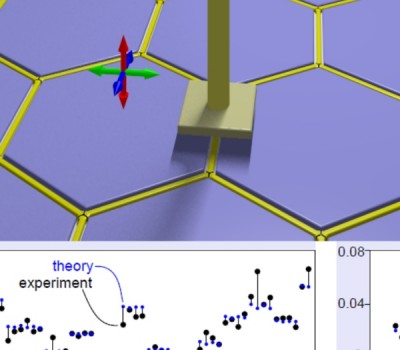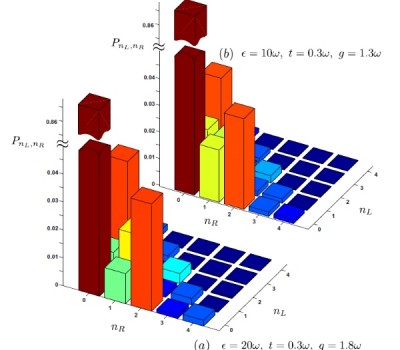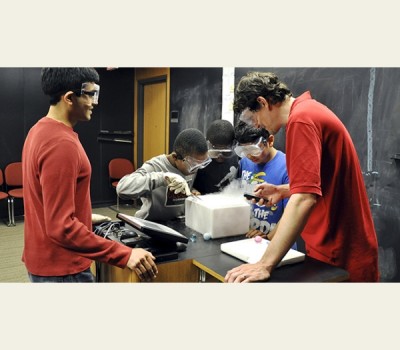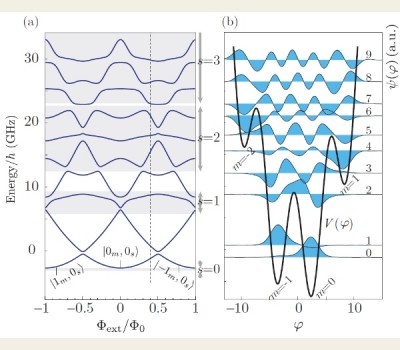Microwave photons inside lattices of coupled resonators and superconducting qubits can exhibit surprising matter-like behavior. Realizing such open-system quantum simulators presents an experimental challenge and requires new tools and measurement techniques. Here, we introduce Scanning Defect Microscopy as one such tool and illustrate its use in mapping the normal-mode structure of microwave photons inside a […]
Uncategorized
Phys. Rev. B article on degenerate ground states in a superconducting circuit
We study the properties of an advanced superconducting circuit, the 0-π circuit. This device, previously introduced by Brooks et al. in Phys. Rev. A 87, 052306 (2013), has multiple intriguing characteristics. With the right choice of parameters – it can exhibit a (near) degeneracy of the ground state, be robust with respect to dephasing, and […]
Andy Li wins World Quantitative and Science Scholarship
One of our group members, Andy (Cheong Yiu) Li, has received the 2014 World Quantitative and Science Scholarship by the WorldQuant Foundation. Find more information about the scholarship here.
Sci. Rep. article on Perturbative approach to Markovian open quantum systems
The exact treatment of Markovian open quantum systems, when based on numerical diagonalization of the Liouville super-operator or averaging over quantum trajectories, is severely limited by Hilbert space size. Perturbation theory, standard in the investigation of closed quantum systems, has remained much less developed for open quantum systems where a direct application to the Lindblad […]
New J. Phys. article on Dispersive regime of the Jaynes–Cummings and Rabi lattice
Photon-based strongly-correlated lattice models like the Jaynes-Cummings and Rabi lattices differ from their more conventional relatives like the Bose-Hubbard model by the presence of an additional tunable parameter: the frequency detuning between the pseudo-spin degree of freedom and the harmonic mode frequency on each site. Whenever this detuning is large compared to relevant coupling strengths, […]
Science Club Physics Field Trip
The field trip involved middle school students from Chicago. An article by Northwestern’s Science in Society covering the outreach event can be found here . More photos showing the event can also be found on Science in Society’s Facebook page.
Phys. Rev. B article on Asymptotic expressions for charge-matrix elements of the fluxonium circuit
In charge-coupled circuit QED systems, transition amplitudes and dispersive shifts are governed by the matrix elements of the charge operator. For the fluxonium circuit, these matrix elements are not limited to nearest-neighbor energy levels and are conveniently tunable by magnetic flux. Previously, their values were largely obtained numerically. Here, we present analytical expressions for the […]
Physical Review X paper on Fluxonium Symmetries published
Quantum circuits present a powerful framework for achieving new functionality by combining circuit elements into larger networks. However achieving quantitative modeling of large quantum circuits such as fluxonium, is hampered by non-linearity, interactions and a large number of degrees of freedom. In our paper we make use of approximate Unitary and Symmetric group symmetries to […]
New Phys. Rev. B article on Fluxonium Qubits in the Dispersive Regime
In circuit QED, protocols for quantum gates and readout of superconducting qubits often rely on the dispersive regime, reached when the qubit-photon detuning $Delta$ is large compared to their mutual coupling strength. For qubits including the Cooper-pair box and transmon, selection rules dramatically restrict the contributions to dispersive level shifts $chi$. By contrast, without […]
Houck Lab: First Resonator Arrays
The Houck Lab at Princeton has recently fabricated and characterized the first microwave resonator arrays. The selected array geometry consists of 12 coplanar waveguide resonators, coupled by three-way capacitors to form a Kagome star. The successful reduction of disorder in resonator frequencies to as little as a few parts in 104 paves the way for […]






